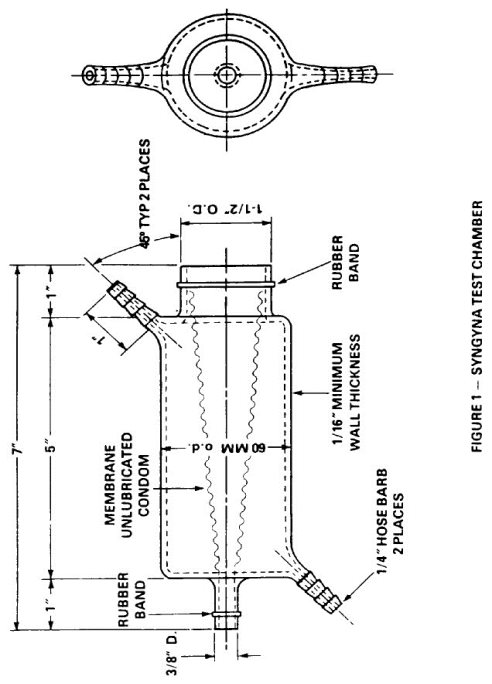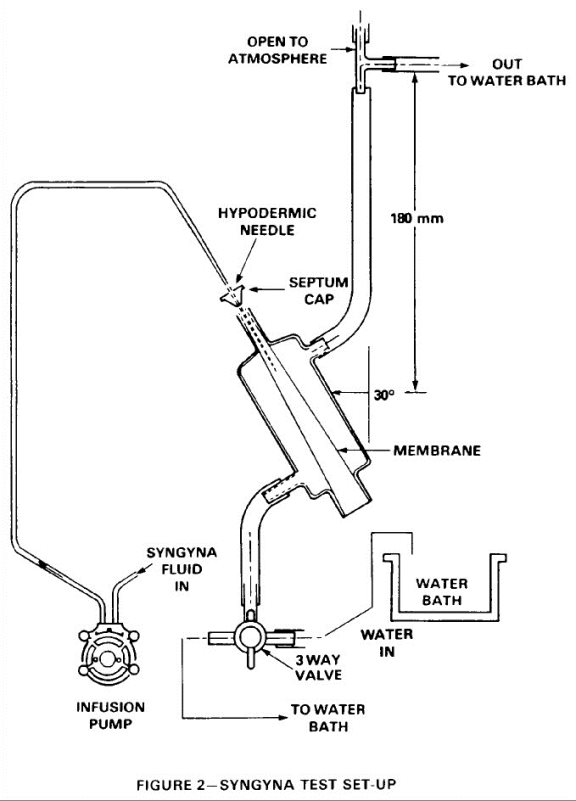 |
D.C. Municipal Regulations (Last Updated: September 13, 2017) |
 |
Title 22. HEALTH |
 |
SubTilte 22-B. PUBLIC HEALTH AND MEDICINE |
 |
Chapter 22-B103. LABELING OF MEDICAL DEVICES |
Section 22-B10324. USER LABELING FOR MENSTRUAL TAMPON
-
10324.1This section applies to scented or scented deodorized menstrual tampons as identified in 21 C.F.R. § 884.5460 and unscented menstrual tampons as identified in 21 C.F.R. § 884.5470.
10324.2Data show that Toxic Shock Syndrome (TSS), a rare but serious and sometimes fatal disease, is associated with the use of menstrual tampons. To protect the public and to minimize the serious adverse effects of TSS, menstrual tampons shall be labeled as set forth in §§ 10324.3 through 10324.5 of this section and tested for absorbency as set forth in § 10324.6.
10324.3If the information specified in § 10324.4 is to be included as a package insert, the following alert statement shall appear prominently and legibly on the package label:
“ATTENTION: Tampons are associated with Toxic Shock Syndrome (TSS). TSS is a rare but serious disease that may cause death. Read and save the enclosed information.”10324.4The labeling of menstrual tampons shall contain the following consumer information prominently and legibly, in such terms as to render the information likely to be read and understood by the ordinary individual under customary conditions of purchase and use:
(a)Warning signs of TSS (for example, sudden fever (usually one hundred two degrees Fahrenheit (102 ºF)) or more) and vomiting, diarrhea, fainting or near fainting when standing up, dizziness, or a rash that looks like a sunburn);
(b) What to do if these or other signs of TSS appear, including the need to remove the tampon at once and seek medical attention immediately;
(c) The risk of TSS to all women using tampons during their menstrual period, especially the reported higher risks to women under thirty (30) years of age and teenage girls, the estimated incidence of TSS of one (1) to seventeen (17) per one hundred thousand (100,000) menstruating women and girls per year, and the risk of death from contracting TSS;
(d) The advisability of using tampons with the minimum absorbency needed to control menstrual flow in order to reduce the risk of contracting TSS; and
(e)The need to seek medical attention before resuming use of tampons if TSS warning signs have occurred in the past, or if women have any questions about TSS or tampon use.
10324.5The statements required by § 10324.4 shall be prominently and legibly placed on the package label of menstrual tampons (unless the menstrual tampons are exempt).
10324.6Menstrual tampon package labels shall bear one (1) of the following absorbency terms representing the absorbency of the production run, lot, or batch;
Ranges of absorbency in grams
Corresponding term of absorbency
6 and under
Junior absorbency
6 to 9
Regular absorbency
9 to 12
Super absorbency
12 to 15
Super plus absorbency
15 to 18
Ultra absorbency
Above 18
No term
10324.7The package label shall include an explanation of the ranges of absorbency and a description of how consumers can use a range of absorbency, and its corresponding absorbency term, to make comparisons of absorbency of tampons to allow selection of the tampons with the minimum absorbency needed to control menstrual flow in order to reduce the risk of contracting TSS.
103324.8A manufacturer shall measure the absorbency of individual tampons using the test method specified in § 10324.10 and calculate the mean absorbency of a production run, lot, or batch by rounding to the nearest one tenth of a gram (0.1 g).
10324.9A manufacturer shall design and implement a sampling plan that includes collection of probability samples of adequate size to yield consistent tolerance intervals such that the probability is ninety percent (90%) that at least ninety percent (90%) of the absorbencies of individual tampons within a brand and type are within the range of absorbency stated on the package label.
10324.10In the absorbency test, an unlubricated condom, with tensile strength between seventeen Mega Pascals (17 MPa) and thirty Mega Pascals (30 MPa), as measured according to the procedure in the American Society for Testing and Materials (ASTM) D 3492-97, "Standard Specification for Rubber Contraceptives (Male Condoms)" for determining tensile strength is attached to the large end of a glass chamber (or a chamber made from hard transparent plastic) with a rubber band (see Figure 1) and pushed through the small end of the chamber using a smooth, finished rod. The condom is pulled through until all slack is removed. The tip of the condom is cut off and the remaining end of the condom is stretched over the end of the tube and secured with a rubber band. A pre-weighed (to the nearest one-tenth gram (0.1 g) tampon is placed within the condom membrane so that the center of gravity of the tampon is at the center of the chamber. An infusion needle fourteen gauge (14 ga.) is inserted through the septum created by the condom tip until it contacts the end of the tampon. The outer chamber is filled with water pumped from a temperature-controlled water bath to maintain the average temperature at twenty-seven, plus or minus one, degrees Celsius (27 +/- 1 ºC). The water returns to the water bath as shown in Figure 2. Syngyna fluid ten grams (10 g) sodium chloride, five tenths gram (0.5 g) Certified Reagent Acid Fuchsin, one thousand milliliters (1,000 ml) distilled water is then pumped through the infusion needle at a rate of fifty milliliters (50 ml) per hour. The test shall be terminated when the tampon is saturated and the first drop of fluid exits the apparatus. (The test result shall be discarded if fluid is detected in the folds of the condom before the tampon is saturated). The water is then drained and the tampon is removed and immediately weighed to the nearest one hundredths gram, (0.01 g). The absorbency of the tampon is determined by subtracting its dry weight from this value. The condom shall be replaced after ten (10) tests or at the end of the day during which the condom is used in testing, whichever occurs first.
FIG 1
FIG 2
10324.11The FDA and the Department may permit the use of an absorbency test method different from the test method specified in this section if each of the following conditions is met:
(a)The manufacturer presents evidence, in the form of a citizen petition submitted in accordance with the requirements of 21 C.F.R. § 10.30, demonstrating that the alternative test method will yield results that are equivalent to the results yielded by the test method specified in this section; and
(b)The FDA or the Department approves the method and has published notice of its approval of the alternative test method in the Federal Register.
10324.12Any menstrual tampon intended to be dispensed by a vending machine is exempt from the requirements of this section.
10324.13Any menstrual tampon that is not labeled as required by §§ 10324.3 through 10324.5 and that is initially introduced or initially delivered for introduction into commerce after March 1, 1990, is misbranded under 21 U.S.C. §§ 321(m) and, 352(a) and (f).